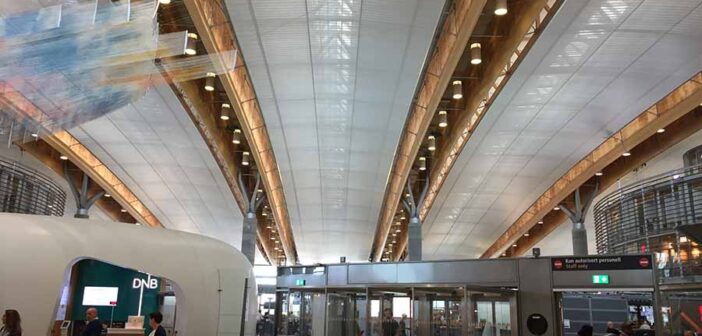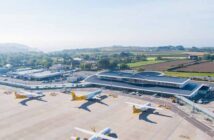Oslo Gardermoen Airport (OSL), Norway’s primary international gateway, handles over 30 million passengers annually, making it the second-busiest airport in the Nordic region. Located 35 kilometres northeast of Oslo in Ullensaker municipality, OSL serves as a hub for Scandinavian Airlines and Norwegian Air Shuttle, connecting to 31 domestic and 164 international destinations. For those searching online, key terms to find information about OSL include.
The passenger experience at OSL is designed for efficiency, with a single terminal split into domestic and international sections, connected by a 5-10 minute walkway. Clear signage and digital screens guide travellers through check-in, security, and boarding, with staff at Avinor Service Centres assisting with queries. Accessibility features include ramps, elevators, and a Sala Amica area for passengers with reduced mobility. A 2017 terminal expansion, incorporating Scandinavian timber, enhances comfort, though the airport’s size requires planning for longer walks.
Security wait times average 10-15 minutes, with Fast Track options available.
Accessing OSL from Oslo is seamless, with the Flytoget Airport Express Train reaching Oslo Central Station in 19-22 minutes for £19, running every 10 minutes during the day. The Vy regional train offers a cheaper alternative at £10, taking 23 minutes with stops at Lillestrّm. Ruter buses connect to nearby areas for £3-£5, while express buses serve wider Norway.
Taxis cost £60-£80 to the city centre, with booking machines in the arrivals hall, and rideshares like Uber operate from designated zones. Driving via the E6 motorway takes 40 minutes, with 11,400 parking spaces, including short-term (£4.30/hour) and long-term (£25/day) options. Car hire from Avis, Hertz, and Europcar is in the arrivals hall.
The airport’s layout features one terminal with four piers: West (A-gates, domestic), South (B-gates, Schengen/international), North (C/D-gates, domestic/international), and East (E/F-gates, Schengen/non-Schengen). Check-in and security are on the first floor, with baggage claim and customs below. Shuttle buses serve remote stands, and moving walkways ease navigation in the international terminal. International arrivals clear customs in the East Pier, with e-gates for EU passengers. The layout supports quick transfers, though non-Schengen connections may require security rechecks.
Delays can occur during peak summer and winter periods, with security waits reaching 20-30 minutes. Weather, particularly snow, may disrupt flights, so travellers should arrive two hours early for domestic and three hours for international flights, checking status via Flightradar24 or the OSL website. Construction for a third runway and nearby city development may cause minor disruptions through 2025. The airport’s snowmelt system ensures runway reliability in winter.
Dining options reflect Norwegian and international tastes, with The Beer House serving local brews and salmon dishes, and Foodmarket offering Italian and Asian options. Jamie’s Deli and Starbucks provide quick bites in the departure lounge. Retail includes Europe’s largest duty-free store, H&M, and Feltrinelli Village for books, alongside shops selling Norwegian souvenirs like woollen sweaters. A pharmacy and newsagent meet travel needs.
Facilities are modern, with free Wi-Fi, charging stations, and lounges like the SAS Lounge (open 06:00-19:00) and OSL Lounge for non-Star Alliance passengers. A children’s play area near Gate C2, pet relief zones, and a chapel are available, alongside luggage storage (£7/day) in the arrivals area. The Radisson Blu and Park Inn, within walking distance, offer convenient lodging. A Relax Zone near Gate C2 provides recliners for rest.
On-time performance is strong, with 300 daily flights and minimal runway congestion, though weather or air traffic control in the Nordic airspace can cause delays. Connections are efficient, with 60-minute minimums for Schengen and 90-minute minimums for non-Schengen transfers, though passengers with checked baggage may need to clear customs. The single-terminal design and shuttle buses simplify gate changes.
Potential delays may stem from winter weather, peak-season crowds, or construction for the Gate to Europe project, including a third runway. Travellers can mitigate risks by using Fast Track, pre-booking parking, or opting for midweek flights.




